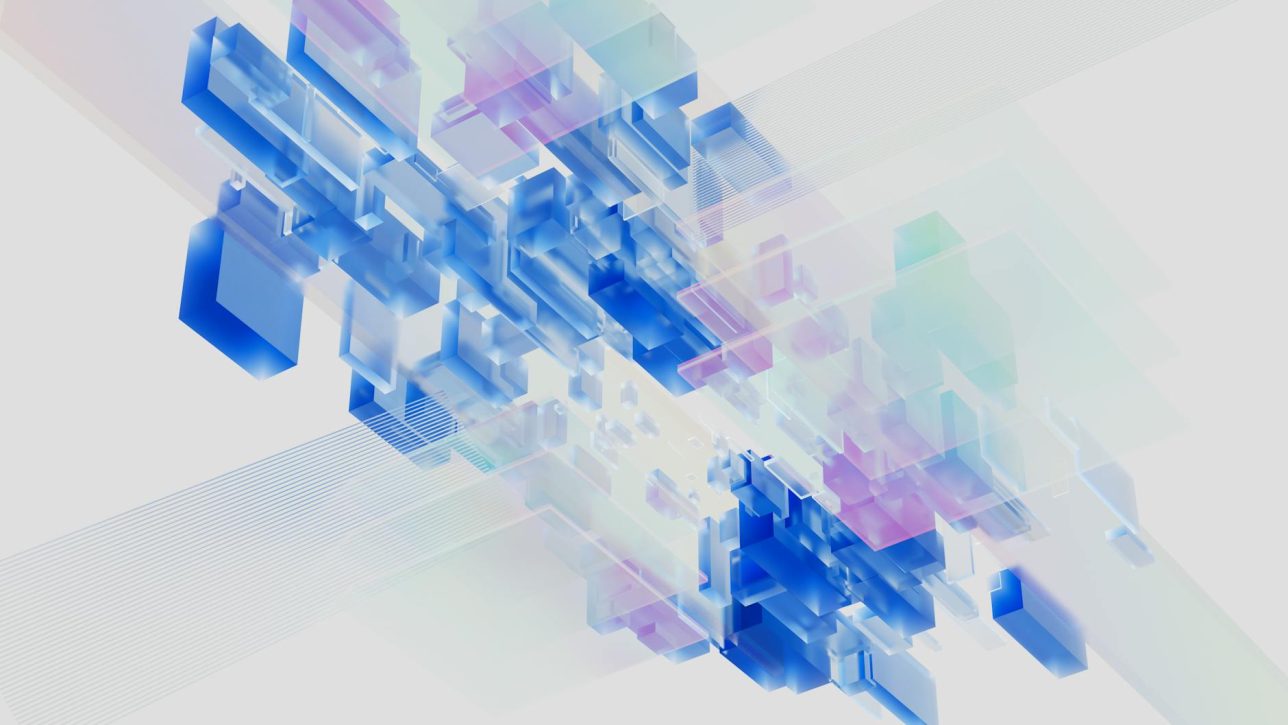Understanding Graph Neural Networks
Graph Neural Networks (GNNs) represent a significant advancement in the application of deep learning techniques to graph-structured data. This section introduces you to GNNs, discusses some of the challenges they face, and highlights their advantages.
Introduction to GNNs
GNNs are a special class of deep learning methods designed to perform inference on data described by graphs. Given that many real-world problems can be modeled as graphs, GNNs offer a powerful approach for handling structured data, enabling you to learn complex relationships between entities. Neural networks assist in modeling nonlinear and complex interactions within this data, making GNNs particularly versatile for a range of applications, from social network analysis to biological data modeling.
Challenges with GNNs
Despite their potential, GNNs come with several challenges:
-
Parallelization: GNNs are difficult to parallelize due to the sequential nature of the message-passing steps. This makes them slower compared to other models like Convolutional Neural Networks (CNNs) or Transformers (Applied Exploration).
-
Computational Complexity: The computational load of GNNs escalates rapidly as the graph size increases, which involves aggregating kⁿ neighbors for each node.
-
Pretraining: Unlike some other deep learning models, pretraining techniques have not yet been effectively applied to GNNs, resulting in GNNs starting the learning process with random weights (Applied Exploration).
-
Performance: In numerous scenarios, GNNs do not necessarily outperform simpler methodologies. This raises a question regarding their utility in specific applications (Applied Exploration).
Advantages of GNNs
GNNs also offer compelling benefits worth considering:
-
Graph Representation: GNNs are adept at handling graph-structured data, making them especially useful for tasks where relationships and connections are crucial. This allows you to leverage the inherent structure of graphs.
-
Flexibility: These networks are applicable to a wide variety of domains and problems, as they can model relationships effectively in complex and nonlinear data settings (Neptune.ai).
-
Deep Learning Integration: GNNs integrate the principles of deep learning, allowing for sophisticated modeling through multiple hidden layers. This enhances their ability to capture intricate features compared to traditional neural networks which may have only one hidden layer (AWS).
-
Support for Various Data Types: GNNs excel at handling a diverse range of data types, enhancing their applicability across different research and industry sectors.
By understanding the foundational concepts of GNNs, you can better appreciate their implementations and explore their extensive applications in areas such as graph convolutional neural networks and deep learning on graphs. Dive deeper into their practical applications through resources on graph theory practical applications and graph neural network implementation.
Implementing Graph Neural Networks
In this section, you will learn about designing algorithms for Graph Neural Networks (GNNs), see some practical code examples, and explore the various applications of these networks in real-world scenarios.
Algorithm Design
When designing algorithms for GNNs, you need to focus on how to leverage the graph structure for tasks like node-level, edge-level, and graph-level predictions. GNNs combine the information from neighboring nodes and edges to make predictions about the graph. This method helps to overcome the limitations that traditional machine learning methods face when dealing with complex graph data.
Common architectures in this space include:
- Graph Convolutional Networks (GCNs): These stack multiple graph convolutional layers to progressively extract higher-level node features. This approach is fundamental for building more complex GNN models.
- Gated Graph Neural Networks (GGNNs): They incorporate gating mechanisms to modify how information flows through the network.
- Graph Attention Networks (GATs): These use attention mechanisms to weigh the influence of neighboring nodes, allowing the model to focus on relevant connections in the graph.
You can find various resources for understanding graph convolutional neural networks and their implementations in different projects.
Code Examples
Implementing GNNs can be accomplished using various libraries, such as PyTorch and TensorFlow. Here’s a simple example illustrating how you might set up a basic GNN model in Python using PyTorch:
import torch
from torch_geometric.nn import GCNConv
from torch_geometric.data import Data
class GNNModel(torch.nn.Module):
def __init__(self, num_features):
super(GNNModel, self).__init__()
self.conv1 = GCNConv(num_features, 16)
self.conv2 = GCNConv(16, 32)
def forward(self, data):
x, edge_index = data.x, data.edge_index
x = self.conv1(x, edge_index)
x = torch.nn.functional.relu(x)
x = self.conv2(x, edge_index)
return x
# Creating a sample graph
edge_index = torch.tensor([[0, 1, 1, 2], [1, 0, 2, 1]], dtype=torch.long)
x = torch.tensor([[1], [2], [3]], dtype=torch.float)
data = Data(x=x, edge_index=edge_index)
model = GNNModel(num_features=1)
output = model(data)
This code constructs a simple GNN that makes node predictions based on features. For more intricate examples and detailed explanations, visit our page on graph theory code examples.
Practical Applications
Graph Neural Networks have been effectively applied to a wide range of practical problems. Here are some notable applications:
- Image Classification: Using GNNs to capture relationships between pixels or segments.
- Natural Language Processing: Modeling semantic relationships between words or sentences.
- Traffic Forecasting: Predicting traffic flow based on road network data.
- Chemistry and Physics: Creating models that understand molecular structures and interactions in compounds.
- Protein Interface Prediction: Building tools to identify interactions between proteins based on their molecular graphs.
- Combinatorial Optimization: Solving complex optimization problems represented in a graph format.
- Graph Generation: Creating new graphs based on learned patterns from existing data.
The versatility of GNNs makes them suitable for numerous domains. By exploring these applications, you can see how graph theory is integrated into real-world scenarios. For further insights into where graph theory is applied, check out applications of graph theory in real life.
Exploring Biconnectivity in GNNs
Graph neural networks (GNNs) are revolutionizing the way we work with data that has complex relationships and interdependencies. One particular aspect of GNNs that is essential to understand is biconnectivity.
Importance of Biconnectivity
Biconnectivity is a property in graph theory that enhances the resilience of a graph. A graph is considered biconnected if there are no vertices whose removal would disconnect the graph. This means that there are at least two distinct paths between any pair of vertices, which is crucial for ensuring reliable communication and data flow in various applications. In GNNs, maintaining biconnectivity can improve model robustness and stability, especially when dealing with dynamic or changing datasets.
Using biconnected components can aid in tasks such as community detection and network reliability analysis, making them essential for applications in fields like social networks, transportation systems, and biology.
Algorithm Implementation
Implementing algorithms that focus on biconnectivity can be achieved through depth-first search (DFS) or union-find methods. Below is a simplified code example demonstrating a DFS approach to find biconnected components in a graph.
def biconnected_components(graph):
index = 0
stack = []
bccs = []
low = {}
ids = {}
def dfs(at):
nonlocal index
stack.append(at)
ids[at] = low[at] = index
index += 1
for to in graph[at]:
if to not in ids:
dfs(to)
low[at] = min(low[at], low[to])
if ids[at] <= low[to]:
bcc = []
while True:
node = stack.pop()
bcc.append(node)
if node == to:
break
bccs.append(bcc)
else:
low[at] = min(low[at], ids[to])
for i in range(len(graph)):
if i not in ids:
dfs(i)
return bccs
In the code snippet above, the biconnected_components function identifies and collects biconnected components from the input graph, leveraging the depth-first search method. For detailed guidance on various implementations and additional examples, you can explore our graph theory code examples.
Real-World Use Cases
Biconnectivity has significant real-world applications across various sectors. Here are some notable examples:
| Application | Description |
|---|---|
| Social Networks | Enhancing communication resilience by ensuring multiple paths exist between users. |
| Transportation Systems | Maintaining connectivity among transit nodes, minimizing disruptions in case of failures. |
| Biological Networks | Analyzing gene interactions and ensuring stable communication pathways among genes. |
| Network Security | Improving data transmission reliability in cybersecurity by maintaining network robustness. |
| Recommendation Systems | Creating stable paths in data flow to improve the relevance and accuracy of suggestions. |
The ability of biconnected components to retain connectivity is critical for these applications, rendering them indispensable for modern GNN implementations. By leveraging concepts from graph theory like biconnectivity, you can enhance your understanding of graph neural networks and their capabilities in addressing complex real-world problems. For a deeper dive into GNNs and related concepts, check out our graph neural networks tutorial or learn more about applications of graph theory in real life.
Enhancing GNN Performance
Exploring ways to enhance the performance of Graph Neural Networks (GNNs) helps you utilize their full potential. This section focuses on overcoming limitations, implementing optimization strategies, and looking ahead to future trends in graph neural networks algorithms.
Overcoming GNN Limitations
GNNs face several limitations that can impact their performance. Some of these include:
- Sequential Steps: GNNs are challenging to parallelize because the message passing process operates in sequential steps. As a result, they may perform slower than other models like Convolutional Neural Networks (CNNs) or Transformers (Applied Exploration).
- Computational Complexity: The computational complexity increases rapidly with the size of the graph. For each node, the GNN must aggregate information from kⁿ neighbors, leading to significant processing demands.
- Pretraining Challenges: Unlike other models, GNNs have not yet successfully utilized pretraining strategies. They start learning with random weights, which can slow down the learning process and affect the model’s efficiency (Applied Exploration).
Identifying these limitations allows you to devise robust strategies for improvement.
Optimization Strategies
Optimizing GNN performance can significantly enhance efficiency and accuracy. Here are some strategies you can implement:
-
Graph Sampling Techniques: These techniques reduce the number of nodes processed per iteration, allowing for faster calculations.
-
Hierarchical Approaches: Implementing methods that leverage the structure of the graph can help aggregate information more efficiently.
-
Adaptive Learning Rates: Using adaptive learning rates can improve convergence speed and model performance by adjusting the learning rate based on the training phase.
-
Mini-Batch Training: Implementing mini-batch training enables GNNs to process a smaller subset of data at a time, leading to improved scalability.
-
Leveraging Pre-trained Models: Investigating base models from deep learning can provide a foundation, potentially enhancing GNN performance in future applications.
You can explore more optimization techniques through detailed resources, such as graph neural network implementation and graph neural networks tutorial.
Future Trends in GNNs
As the field of graph neural networks evolves, several trends are shaping their future:
-
Integration with Other Modalities: Combining GNNs with other learning modalities, such as natural language processing and computer vision, can open new avenues for applications.
-
Improved Pretraining Techniques: Future research may unlock effective pretraining methods for GNNs, allowing for better initialization and accelerated training.
-
Scalability Innovations: Innovations aimed at enhancing scalability will likely emerge, enabling GNNs to handle larger and more complex datasets.
-
Applications Across Diverse Domains: As your understanding of GNNs deepens, anticipate growing applications in areas such as social networks, recommendation systems, and biological networks (applications of graph theory in real life).
With these advancements, GNNs will continue to offer exciting potential as powerful tools in machine learning and graph theory. Keep an eye on graph theory algorithms explained for new developments and detailed insights into future methodologies.




